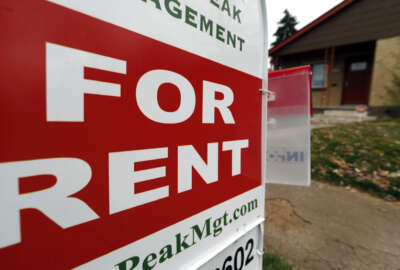The Senate Armed Services Committee is eyeing military basic housing allowance again as a means to save money.
The committee’s 2018 defense authorization bill includes a provision that would cut BAH for dual military couples to the “without dependents rate” even if they have kids. The provision is not in the House version of the bill.
If the Senate passes the bill, it will have to be reconciled with the House version.
Each uniformed service member is entitled to BAH from the military to help pay for the costs of housing in the private sector. If the service member has a dependent he or she receives a higher BAH.
Of course in some cases two members of the military are married, stationed together and therefore live in the same house.
The way the system works now both service members still get BAH, but if they have a child or dependent they get a higher “dependent” BAH rate.
The Senate bill would get rid of the dependent rate, which could equal hundreds of dollars a month, in order to save money in the long run.
A 2016 Army audit found there could be significant savings by cutting BAH for dual military families.
The audit found there are 13,220 military couples taking in the double “dependent rate.”
In 2014, those couples received $471.8 million in combined BAH payment, but the local housing costs for those couples only ended up being about $267 million, a difference of $208 million.
To offset the difference, the Army audit suggested only giving the dependent rate to one service members of the dual military couple.
“The adjustment could save DoD approximately $52 million annually and $311.8 million across the program objective,” the audit stated.
When the audit was released DoD flatly said no to changing BAH.
“While there would be some monetary savings in the BAH program achieved through implementation of a limitation of BAH payments for dual-military couples, the department objects to any limitation based solely on housing or marriage choices,” a DoD spokeswoman told Federal News Radio. “A recommendation that a member is less deserving of compensation, solely because of the member’s marital status, would impose a marriage penalty on married couples in which both members have volunteered to serve their country.”
There is a perception that households receiving two BAHs may be overcompensated, but the household income of a dual military couple is essentially equivalent to a family with one military member and one civilian employed member, the spokeswoman said.
“In each case, the household makes a decision based upon the total household income as to how much housing to consume,” the spokesperson said.
She added that changing BAH would negatively impact DoD’s retention rate.
This isn’t the first time the Senate Armed Services Committee has put BAH in its crosshairs.
Last year, the committee tried to change BAH in two different ways. First it would make service members provide proof of their rent and utility payments. The military would then only reimburse service members for what they actually spent, instead of giving them a flat fee and allowing them to keep the remainder.
The bill would also make it so that couples and service members who room together would not be able to receive two BAH stipends for one house. Instead, their individual stipends would be cut in half and then changed to cover the actual living cost.
Neither provision made into the final bill. Military families are especially protective over BAH and the extra funds can be a big help in expensive areas.
Garry Hall, president and CEO of the Association of the United States Navy, said BAH is especially important for sailors because they are often stationed in areas such as San Diego, California, and Norfolk, Virginia, where housing is expensive due to accessibility to the water and local resorts.
Basic pay for an E-4 with four years in the military is about $2,600 a month. The average rent in San Diego County in March 2016 was $1,618, according to a report by Market Pointe Realty Advisors.
“These are high-dollar areas and without [BAH, sailors] couldn’t afford to live in those areas and scrape by,” Hall said.
But while there are some struggles, enlisted service members have been reporting better financial stability in the past few years.
A Defense Department report released last year on military community and family readiness stated a vast majority of junior enlisted service members felt financially comfortable or at least able to make ends meet without too much difficulty.
About 7 percent to 15 percent of junior enlisted felt uncomfortable in their financial situation in 2014 and between 10 percent and 25 percent of junior enlisted reported experiencing one or more bill payment problems in 2014.
That’s compared to between 20 percent and 30 percent feeling uncomfortable in their finances in 2002 and between 40 percent and 50 percent of junior enlisted service members experiencing payment problems in 2002.
Of course, those numbers only reflect the lowest paid members of the military and not higher paid service members.
Copyright
© 2024 Federal News Network. All rights reserved. This website is not intended for users located within the European Economic Area.
